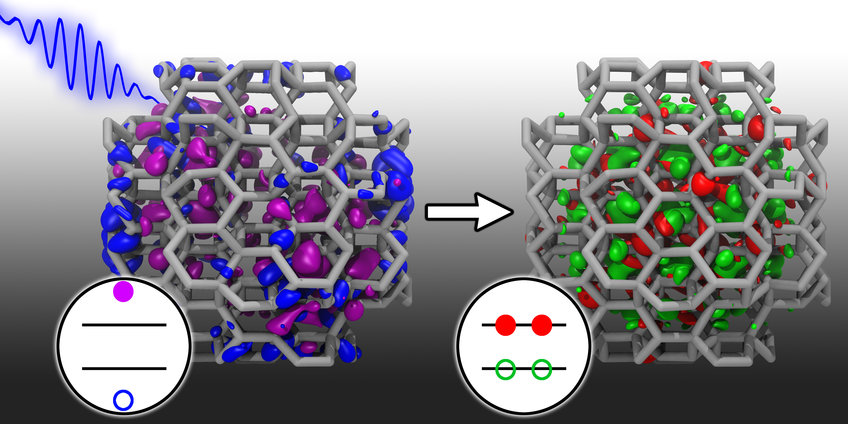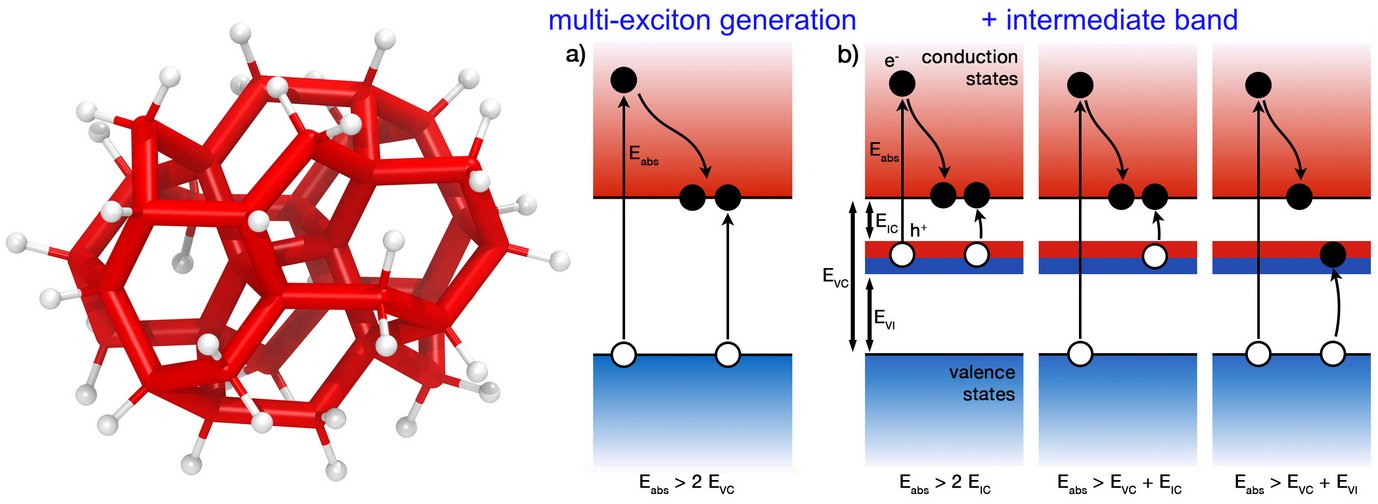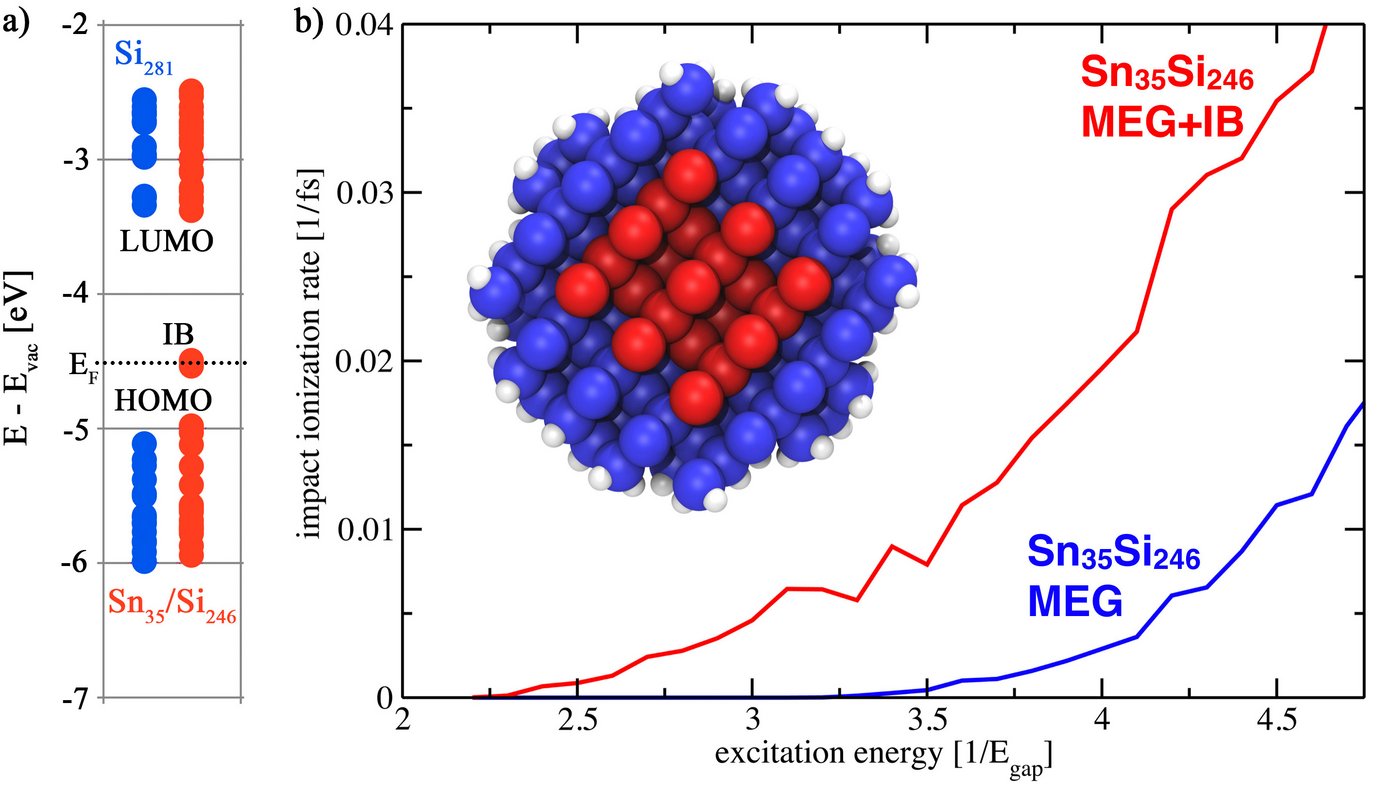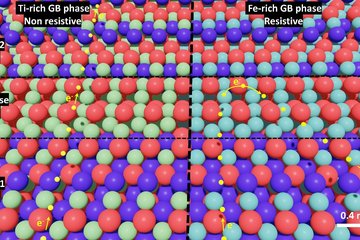We are investigating the use of nanoparticles with a core resembling that of high pressure phases of elemental semiconductors as a means for wavefunction engineering and reducing the electronic gaps, thereby enabling efficient MEG within the solar spectrum. Especially silicon is one of the most suitable materials for MEG, but the electronic gaps of Si nanoparticles at relevant sizes are far too large. We find that Si NPs with a core structure resembling BC8, a metastable phase of Si much like diamond is a metastable phase of carbon, exhibits for the first time suitably small electronic gaps and efficient MEG simultaneously. Such NPs with a BC8 core structure are known to exist embedded in amorphous silicon matrices.
A further improvement of the MEG rates can be achieved by combining MEG with the intermediate band photovoltaics suggested by Marti and Luque. We introduce the required intermediate states using core/shell nanocrystals. Our calculations show that the induced additional MEG-active transitions yield increased MEG rates. The alignment of the intermediate states inside the gap allow us to engineer the energy distribution between the hot electrons and holes, reducing the MEG threshold close to the ideal value of 2Egap.
To enable efficient charge transport nanoparticles are often embedded in solid matrices. The structure and chemistry of the resulting NP-matrix heterojunction and its impact on MEG and charge transport are poorly understood at best. We are performing large scale first principles molecular dynamics (MD) simulations to create accurate models for nanoparticles embedded in sulfide, oxide and nitride matrices. These models will allow for a detailed study of the electronic, optical, transport and MEG properties of such nanocomposite structures.
















